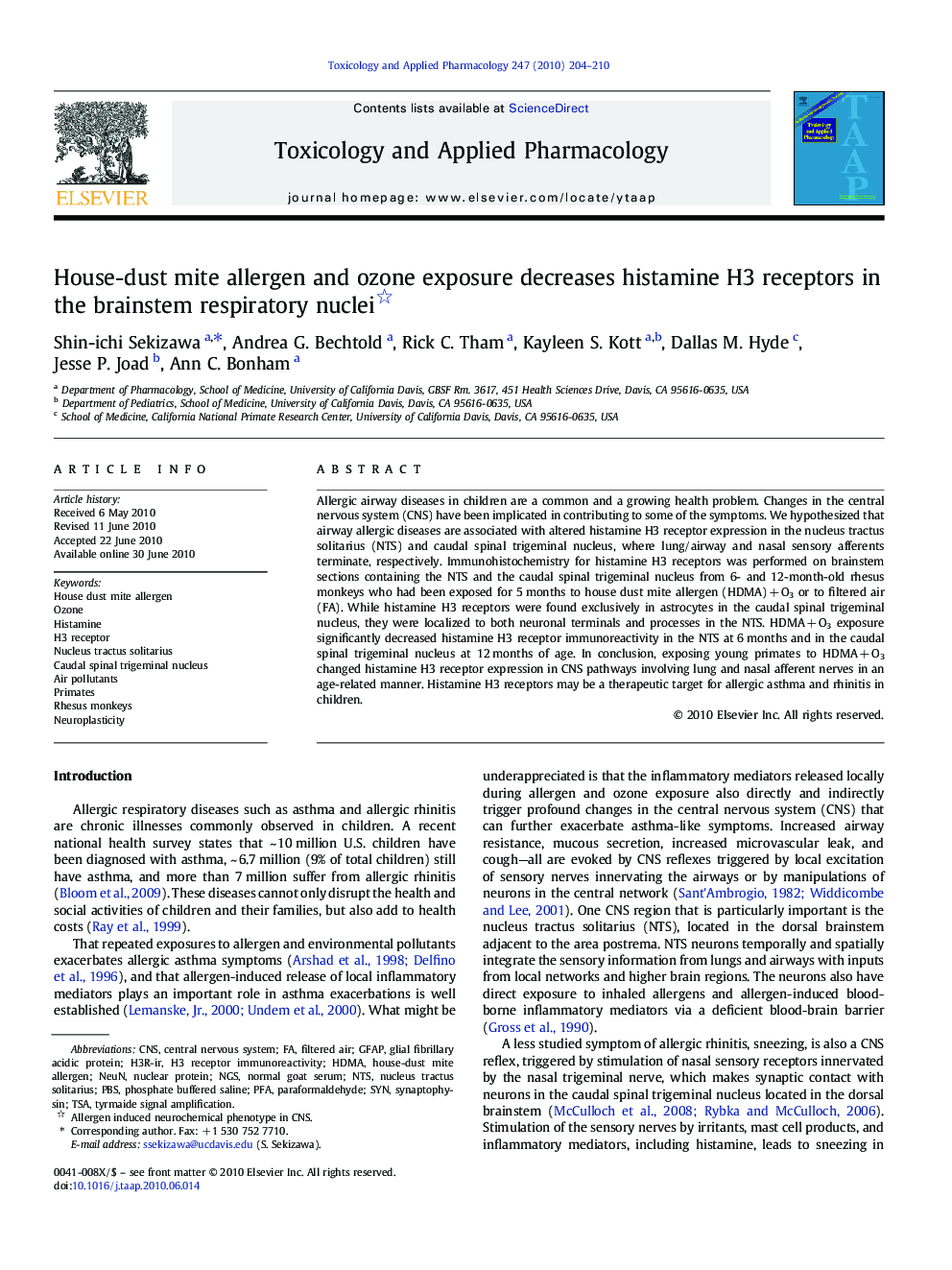| کد مقاله | کد نشریه | سال انتشار | مقاله انگلیسی | نسخه تمام متن |
|---|---|---|---|---|
| 2569553 | 1128536 | 2010 | 7 صفحه PDF | دانلود رایگان |
عنوان انگلیسی مقاله ISI
House-dust mite allergen and ozone exposure decreases histamine H3 receptors in the brainstem respiratory nuclei
دانلود مقاله + سفارش ترجمه
دانلود مقاله ISI انگلیسی
رایگان برای ایرانیان
کلمات کلیدی
PBSNeuNNTSCaudal spinal trigeminal nucleusPFAHDMANGSGFAPTSAAir pollutants - آلاینده های هواHouse dust mite allergen - آلرژن گرد و غبار خانهOzone - اُزون CNS - دستگاه عصبی مرکزیnormal goat serum - سرم طبیعی بزcentral nervous system - سیستم عصبی مرکزیSynaptophysin - سیناپتوفیزینSyn - سینتPhosphate buffered saline - فسفات بافر شورPrimates - مقدماتیrhesus monkeys - میمونهای ریزNeuroplasticity - نوروپلاستیnucleus tractus solitarius - هسته دستگاه انفرادیfiltered air - هوا فیلتر شده استHistamine - هیستامینparaformaldehyde - پارافرمالدهیدGlial fibrillary acidic protein - پروتئین اسیدی فیبریلاسیون گلایالNuclear protein - پروتئین هسته ایH3 receptor - گیرنده H3
موضوعات مرتبط
علوم زیستی و بیوفناوری
علوم محیط زیست
بهداشت، سم شناسی و جهش زایی
پیش نمایش صفحه اول مقاله

چکیده انگلیسی
Allergic airway diseases in children are a common and a growing health problem. Changes in the central nervous system (CNS) have been implicated in contributing to some of the symptoms. We hypothesized that airway allergic diseases are associated with altered histamine H3 receptor expression in the nucleus tractus solitarius (NTS) and caudal spinal trigeminal nucleus, where lung/airway and nasal sensory afferents terminate, respectively. Immunohistochemistry for histamine H3 receptors was performed on brainstem sections containing the NTS and the caudal spinal trigeminal nucleus from 6- and 12-month-old rhesus monkeys who had been exposed for 5Â months to house dust mite allergen (HDMA)Â +Â O3 or to filtered air (FA). While histamine H3 receptors were found exclusively in astrocytes in the caudal spinal trigeminal nucleus, they were localized to both neuronal terminals and processes in the NTS. HDMAÂ +Â O3 exposure significantly decreased histamine H3 receptor immunoreactivity in the NTS at 6Â months and in the caudal spinal trigeminal nucleus at 12Â months of age. In conclusion, exposing young primates to HDMAÂ +Â O3 changed histamine H3 receptor expression in CNS pathways involving lung and nasal afferent nerves in an age-related manner. Histamine H3 receptors may be a therapeutic target for allergic asthma and rhinitis in children.
ناشر
Database: Elsevier - ScienceDirect (ساینس دایرکت)
Journal: Toxicology and Applied Pharmacology - Volume 247, Issue 3, 15 September 2010, Pages 204-210
Journal: Toxicology and Applied Pharmacology - Volume 247, Issue 3, 15 September 2010, Pages 204-210
نویسندگان
Shin-ichi Sekizawa, Andrea G. Bechtold, Rick C. Tham, Kayleen S. Kott, Dallas M. Hyde, Jesse P. Joad, Ann C. Bonham,